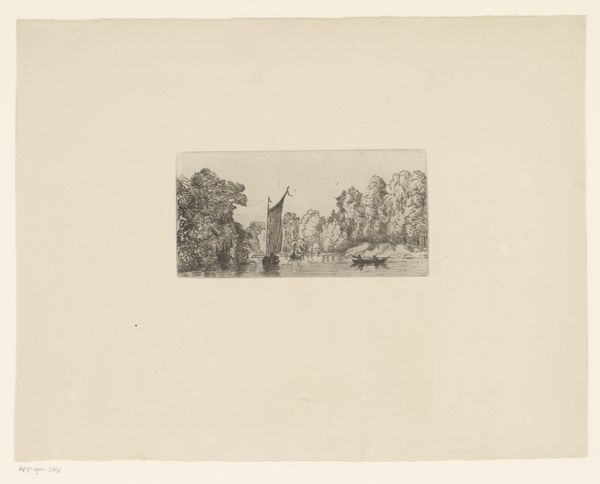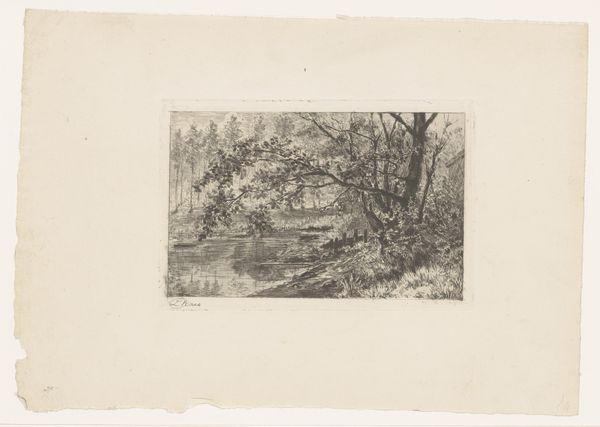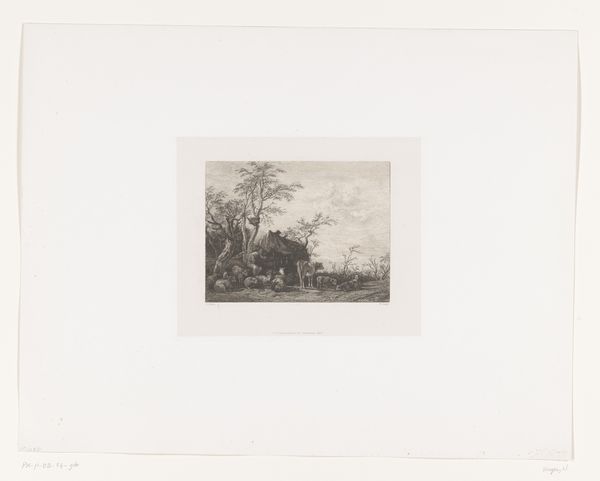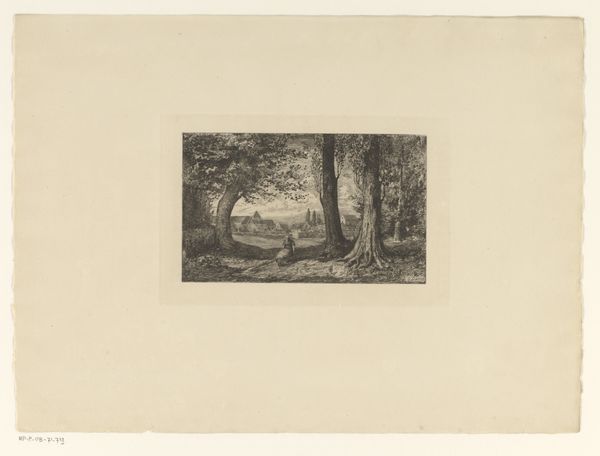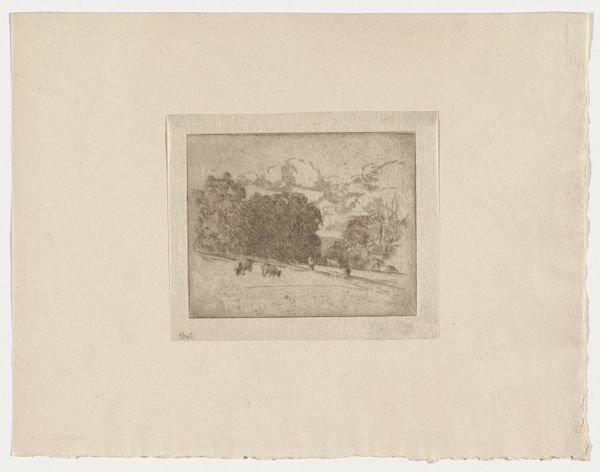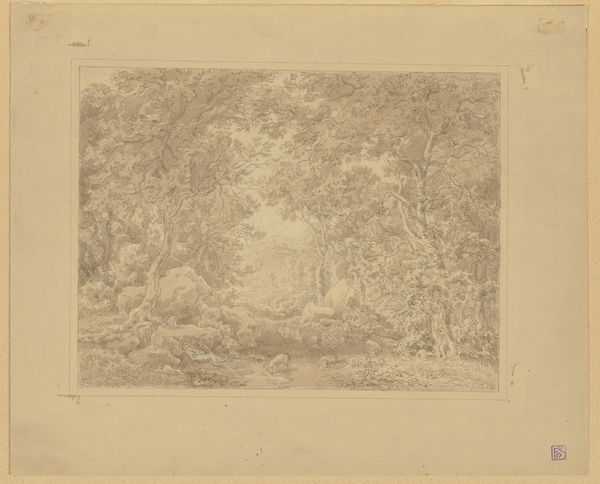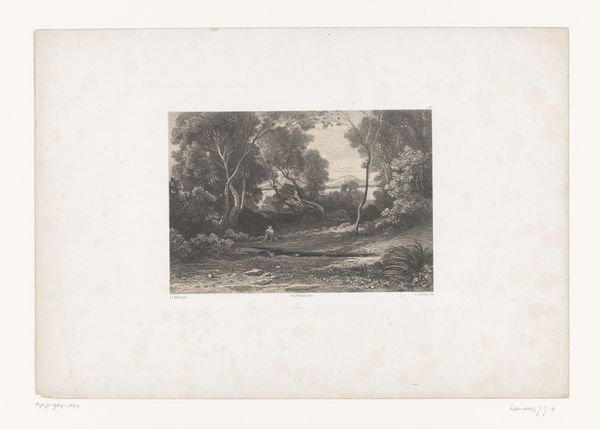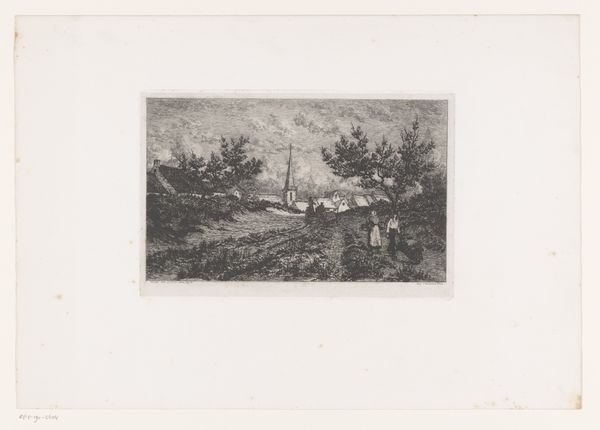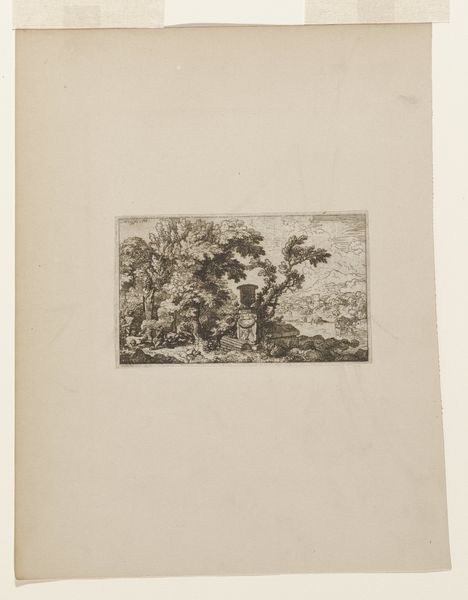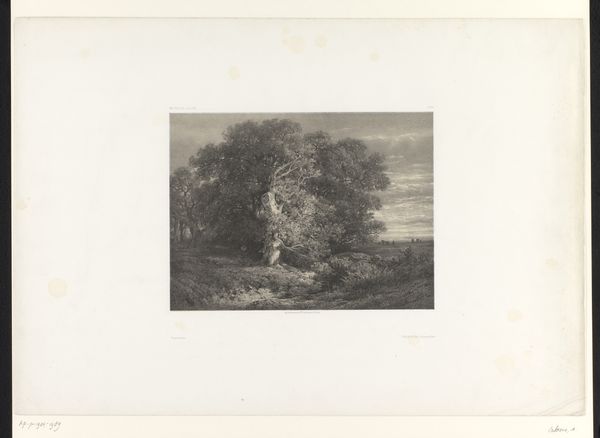
drawing, paper
#
drawing
#
landscape
#
paper
#
forest
#
realism
Dimensions: height 312 mm, width 447 mm
Copyright: Rijks Museum: Open Domain
Curator: Adolphe Mouilleron made this drawing titled, "Cows by a puddle in a forest" sometime between 1846 and 1853. It is currently held at the Rijksmuseum. Editor: The contrast makes me think about the work of printmaking and how each piece might represent multiple people who labored to bring us a certain image of the rural landscape and its inhabitants, cattle, as part of our collective visual repertoire. It strikes me as very calm. Curator: Cattle often appear as a symbol of pastoral life, of fecundity and tranquility. You see this echoed even further in idealized representations of rural living in much earlier Roman art and poetry. Here, it looks like they're almost presented as equals to humans. Editor: Right, cows signify the industrialization of agriculture in the Dutch context of the mid-19th century. The availability of mass produced milk products had a huge impact on working class nutrition at this moment. To your point about an ideal, in that period, urbanites are nostalgic about the rural. At a moment of greater social inequalities we must also look to these sorts of sentimental works, with paper specifically available in a wide array of shapes and qualities in Holland, the material context can't be ignored. Curator: Yes, although Mouilleron only used paper, it gives the overall image an enduring quality, it's also representative of the symbolic values projected onto pastoral environments, perhaps reflecting anxieties or yearnings related to urban industrial growth. Think of how that narrative sustains in art from this period forward, or our consumption habits, and even the mythology surrounding agricultural work, or the lack thereof. Editor: I think you are right about the image sustaining, that sort of representation feeds directly into industrializing food processes as "wholesome". But now I see the darker palette overall; the lack of strong light perhaps reinforces an unromantic, real view into milk production as an essential industry. The stark, material simplicity actually lends it gravity. Curator: So even within seemingly simple images of cows by a puddle, we're seeing echoes of cultural memory and a simultaneous material tension related to production? I agree, that tension shapes the viewing experience. Editor: I think this highlights a link in the evolution of artistic representation and material progress... how an artist both responds to and perpetuates systems through his chosen subjects and methods.
Comments
No comments
Be the first to comment and join the conversation on the ultimate creative platform.

